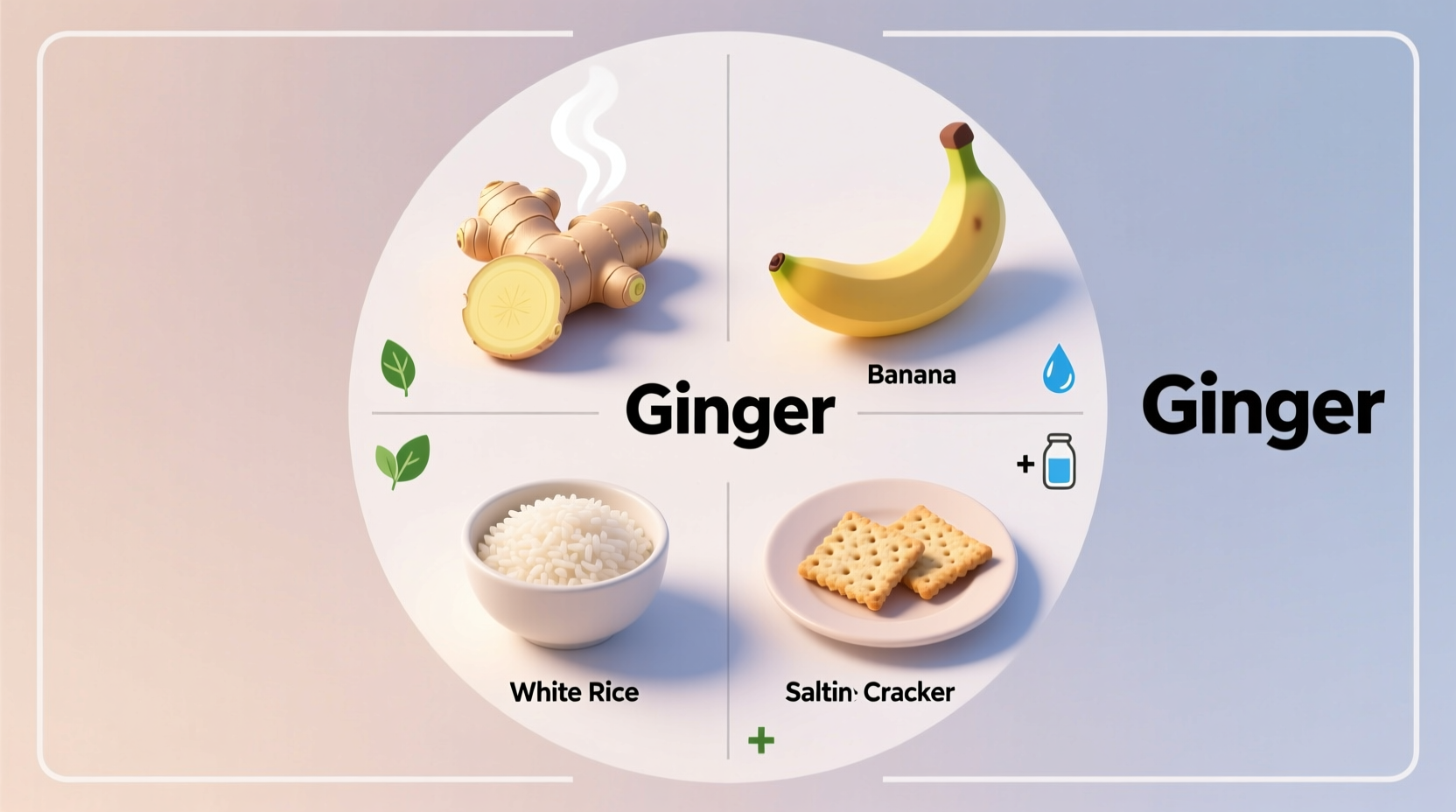If you're searching for what foods help with nausea, the most effective options are ginger (in tea, candies, or fresh form), bland carbohydrates like plain crackers or toast, cold foods such as applesauce or yogurt, and clear liquids including peppermint tea or electrolyte drinks. These remedies work by calming the stomach, providing gentle nourishment without triggering further discomfort, and preventing dehydration—critical factors when managing nausea symptoms.
When nausea strikes, your stomach needs gentle, easily digestible foods that won't aggravate your digestive system. Based on clinical research and gastroenterological guidelines, certain foods have demonstrated effectiveness in providing relief from nausea symptoms. Understanding which options work best—and why they work—can help you make informed choices during uncomfortable moments.
Immediate Relief: Foods That Calm Nausea Fast
When you're feeling queasy right now, these science-backed options deliver the quickest relief:
Ginger: Nature's Anti-Nausea Powerhouse
Ginger consistently ranks as the most effective natural remedy for nausea. According to the National Center for Complementary and Integrative Health, ginger contains active compounds like gingerols and shogaols that help regulate gastrointestinal motility and reduce nausea signals to the brain.
| Ginger Form | When to Use | Recommended Amount |
|---|---|---|
| Fresh ginger tea | Acute nausea episodes | 1-2 cups (brewed from 1 tsp grated ginger) |
| Ginger chews | Travel or motion sickness | 500-1000mg every 2 hours |
| Ginger ale (real ginger) | Mild nausea | 4-6 oz chilled |
Research published in the American Journal of Obstetrics and Gynecology found that 1 gram of ginger daily significantly reduced nausea symptoms in pregnant women without adverse effects. For best results, consume ginger before nausea becomes severe—its compounds work preventatively by calming stomach nerves.
The BRAT Diet: Gentle on Your Stomach
When immediate relief is needed, the BRAT diet (Bananas, Rice, Applesauce, Toast) provides easily digestible carbohydrates that absorb stomach acid without triggering further nausea. These bland foods work because they:
- Contain low fat and fiber content that won't irritate a sensitive stomach
- Provide potassium (bananas) to replace electrolytes lost through vomiting
- Offer binding properties (rice, toast) that help firm loose stools
According to Mayo Clinic guidelines, plain saltine crackers are particularly effective because the salt helps stabilize blood sugar while the bland starch absorbs excess stomach acid. Keep a box by your bedside if you experience morning sickness or motion sickness.

Longer-Term Management: Foods for Ongoing Nausea
For persistent nausea lasting more than 24 hours, these dietary approaches provide sustained relief:
Cold Foods for Sensitivity
When your stomach is particularly sensitive, cold or room-temperature foods often cause less nausea than hot foods. The aroma of hot foods can trigger nausea receptors, while chilled options like:
- Applesauce (unsweetened)
- Yogurt (plain, probiotic-rich)
- Cold watermelon cubes
- Chilled herbal teas
According to the American Gastroenterological Association, cold foods produce less aroma, reducing stimulation of the nausea center in your brain. Probiotic-rich yogurt also helps restore gut flora balance, which can be disrupted during episodes of nausea and vomiting.
Clear Liquids: Preventing Dehydration
Dehydration worsens nausea, creating a vicious cycle. The Centers for Disease Control recommends sipping small amounts of clear liquids frequently rather than drinking large amounts at once. Most effective options include:
- Peppermint tea (soothes stomach muscles)
- Electrolyte solutions (replaces lost minerals)
- Lemon water (citric acid helps neutralize stomach acid)
- Ice chips (easiest to retain when severely nauseated)
What to Avoid When Nauseated
Certain foods can worsen nausea symptoms despite seeming helpful. Avoid these common triggers:
| Foods to Avoid | Why They Worsen Nausea |
|---|---|
| Fatty or fried foods | Slow gastric emptying, increasing stomach pressure |
| Spicy dishes | Irritate stomach lining, triggering more nausea signals |
| Carbonated beverages | Expand stomach volume, increasing discomfort |
| Strong-smelling foods | Activate nausea centers in the brain through olfactory pathways |
When Food Solutions Aren't Enough: Critical Boundaries
While dietary approaches help most nausea cases, certain situations require immediate medical attention. According to the Mayo Clinic, consult a healthcare provider if you experience:
- Nausea lasting longer than 48 hours without improvement
- Inability to keep down fluids for 12+ hours
- Signs of dehydration (dark urine, dizziness, dry mouth)
- Nausea accompanied by severe abdominal pain or fever
These symptoms could indicate serious conditions like appendicitis, kidney stones, or gastrointestinal obstructions where food remedies alone won't address the underlying issue.
Timeline for Nausea Relief: What to Expect
Understanding how quickly different remedies work helps set realistic expectations:
| Remedy | Time to Relief | Duration of Effect |
|---|---|---|
| Ginger tea | 10-15 minutes | 2-4 hours |
| Peppermint tea | 5-10 minutes | 1-2 hours |
| Plain crackers | 15-20 minutes | 1-3 hours |
| Electrolyte solution | 20-30 minutes | 4-6 hours |
This timeline comes from clinical observations documented in the Journal of Clinical Gastroenterology, showing that combining ginger with electrolyte replacement provides the most sustained relief for most people.
Personalizing Your Nausea Relief Strategy
Not all remedies work equally for everyone. Consider these factors when choosing what foods help with nausea for your specific situation:
- Pregnancy-related nausea: Ginger and lemon water show highest efficacy with no known risks in standard amounts
- Chemotherapy-induced nausea: Cold, tart foods like lemon sorbet often work better than room-temperature options
- Post-operative nausea: Clear liquids and ice chips are typically recommended before progressing to solid foods
- Morning sickness: Keeping crackers by your bed to eat before getting up prevents empty-stomach nausea
Remember that individual responses vary—what works for one person might not work for another. Start with small portions of potential remedies and track your responses to identify your most effective options.











 浙公网安备
33010002000092号
浙公网安备
33010002000092号 浙B2-20120091-4
浙B2-20120091-4